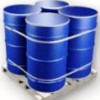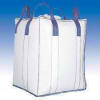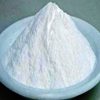Anmol Chemicals is the pioneer manufacturers of Zinc Oxide, Pharmaceutical Excipients Food & Flavor chemicals in India. We offer Halal and Kosher Zinc Oxide made in an ISO9001, ISO22000 (FSSC22000) cGMP and GLP certified facility. Our group has several manufacturing facilities spread across the world, supported by toll manufacturers and representatives in UAE, Europe, USA, China and has several associated manufacturing facilities spread across India. All the Information on Physics, Chemistry, Applications, Uses and Technology on Manufacture of Zinc Oxide is in these pages. |
| The units have one or more of the certifications like FDA GMP, ISO 9001, ISO 22000, HACCP, REACH, Kosher & Halal |





Zinc Oxide Manufacturers SDS GHS, MSDS Sheet
Specifications of Zinc Oxide Manufacturers
Zinc Oxide SDS GHS, MSDS Sheet, Material Safety Data Sheet
Section 1: Chemical Product and Company Identification
Product Name: Zinc Oxide
CAS Number: 1314-13-2
EINECS EC Number: 215-222-5
Molecular Formula: ZnO
Molecular Weight: 81.39
Recommended usage: Industrial Manufacturing.
Section 2: Hazards Identification
GHS, Globally Harmonized System Classification in accordance with 29 CFR 1910
Classification according to Regulation (EC) No 1272/2008
Hazardous to the aquatic environment, long-term hazard Category 1 (H410)
Labeling according GHS & Regulation (EC) No 1272/2008
| GHS Label Elements  Aquatic Toxicity |
Signal Words: Warning
Hazard statements:
H410: Very toxic to aquatic life with long lasting effects
Precautionary statements: P363, P501
P273: Avoid release to the environment.
P391: Collect spillage.
P501: Dispose of contents/container in accordance with local/regional/national/international regulation.
Classification according to EU Directives 67/548/EEC or 1999/45/EC:
Hazard symbol(s): N
R-phrase(s):
R50/53 Very toxic to aquatic organisms, may cause long-term adverse effects in the aquatic environment.
S-phrase(s):
S60 This material and its container must be disposed of as hazardous waste.
S61 Avoid release to the environment. Refer to special instructions/ Safety data sheets.
For the full text of the H-statements & R-phrases mentioned in this Section, see Section 16.
Section 3: Composition and Information on Ingredients
Product Name: Zinc Oxide
CAS Number: 1314-13-2
EINECS EC Number: 215-222-5
% by Weight: 100
Section 4: First Aid Measures
Always get medical attention after the first aid is over.
Eye Contact: Flush eyes with plenty of water for at least 15 minutes, occasionally lifting the upper and lower eyelids. Get medical aid.
Skin Contact: After contact with skin, wash immediately with plenty of water. Gently and thoroughly wash the contaminated skin with running water and non-abrasive soap. Be particularly careful to clean folds, crevices, creases and groin. Cover the irritated skin with an emollient. If irritation persists, seek medical attention.
Inhalation: Remove from exposure and move to fresh air immediately. If not breathing, give artificial respiration. If breathing is difficult, give oxygen. Get medical aid if cough or other symptoms appear.
If swallowed: Never give anything by mouth to an unconscious person. Rinse mouth with water. Consult a physician.
Section 5: Fire and Explosion Data
Flammability of the Product: Non-flammable.
Auto-Ignition Temperature: Not applicable.
Products of Combustion: Zinc & .Zinc Oxide.
Suitable extinguishing media: Use water spray, alcohol-resistant foam, dry chemical or carbon dioxide.
Explosion Hazards in Presence of Various Substances:
Risks of explosion of the product in presence of mechanical impact: Not available.
Risks of explosion of the product in presence of static discharge: Not available.
Fire Fighting Media and Instructions: Not applicable. However wear self contained breathing apparatus for fire-fighting if necessary.
Section 6: Accidental Release Measures
Small Spill: Use appropriate tools to put the spilled solid in a convenient waste disposal container. Finish cleaning by spreading water on the contaminated surface and dispose of according to local and regional authority requirements. Evacuate personnel to safe areas. Avoid breathing dust.
Large Spill: Use a shovel to put the material into a convenient waste disposal container. Prevent further leakage or spillage if safe to do so. Do not let product enter drains. Discharge into the environment must be avoided.
Section 7: Handling and Storage
Handling: Wash thoroughly after handling. Remove contaminated clothing and wash before reuse. Use with adequate ventilation. Avoid contact with skin and eyes. Avoid ingestion and inhalation.
Storage: Store in a cool, dry place. Keep Zinc carbonate containers tightly closed.
Section 8: Exposure Controls/Personal Protection
Occupational Exposure Limits:
USA ACGIH, ACGIH TWA (mg/m³): 2 mg/m³
USA ACGIH, ACGIH STEL (mg/m³): 10 mg/m³
USA OSHA, OSHA PEL (TWA) (mg/m³): 5 mg/m³
USA NIOSH, NIOSH REL (TWA) (mg/m³): 5 mg/m³
Engineering Controls: Use process enclosures, local exhaust ventilation, or other engineering controls to keep airborne levels below recommended exposure limits. If user operations generate dust, fume or mist, use ventilation to keep exposure to airborne contaminants below the exposure limit.
Personal Protection: Safety glasses. Lab coat. Dust respirator. Be sure to use an approved/certified respirator or equivalent. Gloves.
Personal Protection in Case of a Large Spill: Splash goggles. Full suit. Dust respirator. Boots. Gloves. A self contained breathing apparatus should be used to avoid inhalation of the product. Suggested protective clothing might not be sufficient; consult a specialist BEFORE handling this product.
Section 9: Physical and Chemical Properties
Physical state and appearance: Zinc oxide is solid. (Powdered solid.)
Odor: Odorless.
Taste: Not available.
Color: White.
pH (1% soln/water): around 7.
Boiling Point: Not available.
Melting Point: 1975°C.
Specific Gravity: 5.61
Solubility: Very slightly soluble in cold water, hot water.
Section 10: Stability and Reactivity Data
Stability: Zinc oxide is stable.
Incompatibility with various substances: Strong oxidizing agents & acids.
Polymerization: No.
Section 11: Toxicological Information
LD50 Oral - mouse - 7.950 mg/kg
LC50 Inhalation - mouse - 2.500 mg/m3
Carcinogenicity: Not listed as a suspected/confirmed carcinogen by ACGIH, IARC, NTP, SHA.
Other Toxic Effects on Humans: Slightly hazardous in case of skin contact (irritant), of ingestion, of inhalation.
Section 12: Ecological Information
Toxicity to fish: LC50 - Oncorhynchus mykiss (rainbow trout) - 1,1 mg/l - 96,0 h
Toxicity to daphnia and other aquatic invertebrates: EC50 - Daphnia magna (Water flea) - 0,098 mg/l - 48 h
BOD5 and COD: Not available.
Products of Biodegradation: Possibly hazardous short term degradation products are not likely. However, long term degradation products may arise.
Toxicity of the Products of Biodegradation: Insoluble in water. (can be separated from aqueous systems by sedimentation and/or filtration techniques. Predicted to have low mobility in soil.
Section 13: Disposal Considerations
Waste Disposal: Dispose all waste in accordance with legal requirement.
Section 14: Transport Information
DOT Classification: Not a DOT controlled material (United States).
ADR/RID:
UN3077: ENVIRONMENTALLY HAZARDOUS SUBSTANCE SOLID N.O.S. (Zinc Oxide)
Transport hazard Classes: 9
Packing group: III
Environmental hazards: Yes
IMDG:
UN3077: ENVIRONMENTALLY HAZARDOUS SUBSTANCE SOLID N.O.S. (Zinc Oxide)
Transport hazard Classes: 9
Packing group: III
Environmental hazards: Yes
IATA:
UN3077: ENVIRONMENTALLY HAZARDOUS SUBSTANCE SOLID N.O.S. (Zinc Oxide)
Transport hazard Classes: 9
Packing group: III
Environmental hazards: Yes
Section 15: Other Regulatory Information
USA:
TSCA (Toxic Substances Control Act) inventory: Listed
SARA Section 311/312 (40 CFR 370) Hazard Categories: Immediate Hazard:
SARA 313 toxic chemical notification and release reporting: Zinc oxide.
CERCLA: The RQ for the product, based on the RQ for Zinc oxide (as Zinc) 100% of 1,000 lbs, is 1,000 lbs. Many states have more stringent release reporting requirements.
California Prop. 65: Not applicable
Canada WHMIS: Class D-2-B.
Canada DSL: Listed on the Canadian DSL
Section 16 - Additional Information
EINECS EC Number: 215-222-5
H410 = Very toxic to aquatic life with long lasting effects
N = Dangerous for the Environment
R50/53 = Very toxic to aquatic organisms, may cause long-term adverse effects in the aquatic environment.
DISCLAIMER: The information and recommendations set forth herein (hereinafter "Information") are presented in good faith and believed correct as of the date hereof. It is compiled from various sources and it is not necessarily all inclusive nor fully adequate in every circumstance. In addition, these suggestions should not be confused with nor followed in violation of applicable laws, regulations, rules or insurance requirements applicable. This MSDS sheet is intended only as a guide to the appropriate precautionary handling of the material by a properly trained person using this product. Individuals receiving the information must exercise their independent judgment in determining its appropriateness for a particular purpose.
Zinc Oxide manufacturers at:
Anmol Chemicals
S-8, SARIFA MANSION, 2ND FLANK ROAD, CHINCHBUNDER, MUMBAI 400009, INDIA
TEL: (OFFICE) 91-22-23770100, 23726950, 23774610, 23723564 - FAX: 91-22-23728264
e-mail: anmolc@mtnl.net.in

Exports to USA, Canada, UAE, Dubai, South Africa, Tanzania, Kenya, Nigeria, Egypt, Uganda, Turkey, Mexico, Brazil, Chile, Argentina, Europe Netherlands, Italy, Spain, Germany, Portugal, France, Malaysia, Indonesia, Thailand, Norway, Ukraine, Russia, Korea, Japan, etc.
Copyright and Usual Disclaimer is Applicable. 25 February, 2022